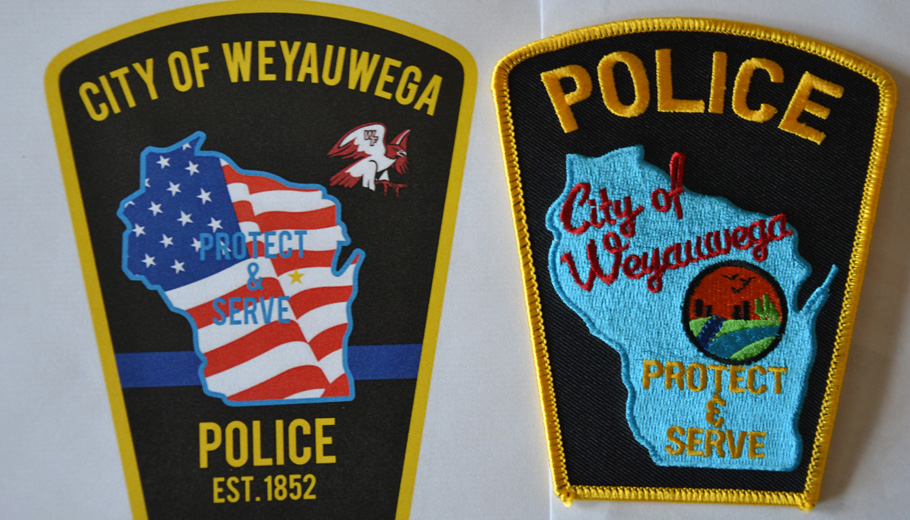
More hometown history, symbolism
By James Card
Weyauwega police officers will soon be sporting a new department patch that was custom designed to highlight the department and what it stands for.
It was an idea that Chief Brandon Leschke had in mind for most of his career.
Leschke has served on the police force for 18 years and during that time he learned that Weyauwega’s department patch was a copycat of the patch worn by Watertown police officers.
The patches are nearly identical with the same font, color scheme and design.
Leschke and his officers tweaked the new design during monthly staff meetings to make it unique to Weyauwega.
Local, state, national symbols
The new patch has the W-F school’s Warhawk mascot as an acknowledgement to the school resource officer who serves there and to the school district being a public partner. The hawk image is also a nod to the Red Hawks of St. Peter.
The word “police” is displayed less prominently and is reduced to a smaller font with the reasoning that it’s obvious that the person in the uniform is a law enforcement officer.
The extra room gained from that change was put towards “City of Weyauwega” on the top of the patch.
“We wanted to be able to say who we are,” said Leschke.
“And if we are out-of-state traveling or we share a patch, we want people to recognize that we are a Wisconsin law enforcement agency so we kept the state on there,” he said, referring to the outline of the state of Wisconsin which is filled in with the stars and stripes.
Around 15 years ago, the previous administration decided to take the American flag off their uniforms.
Part of it was related to the confusion of how an American flag should be worn on a uniform.
The U.S. military wears a flag patch that is backwards. This is from an Army regulation that says the blue square of stars must be positioned forward to resemble a flag being carried into battle. The idea is to think of the patch as a flag. As a soldier is “assaulting forward,” the red and white stripes would flow to the rear.
As for law enforcement officers, there is no universal code. Some departments have the flag on the left shoulder which is closest to the heart. Others follow the army tradition. Some don’t have the flag at all.
“I wanted to get the flag back on our uniform in some fashion. This is a way to get a flag representation on our uniform and not worry about which way it is flowing,” said Leschke.
A gold star represents the geographic location of Weyauwega within the state. The outline and font of the patch will be of two colors: grey for the patrol officers and gold for the administration.
A blue bar running across the patch symbolizes the “Thin Blue Line,” the concept of the police as a buffer that keeps law and order from dissolving into chaos.
Established 1852
Leschke wanted to add an “Established in” date to the patch but nobody knew when that was.
By chance, he looked into an old filing cabinet in a storage room and in the first drawer was the answer: a file titled, “Weyauwega Police History.”
On a fragile sheet of typewriter paper was the early chronology of the police department. On April 6, 1852, the first town meeting in Weyauwega was held and constables were named.
On April 7, 1893, the job description of the constables was defined:
“Night watch shall keep on the street from 9 p.m. to 5 a.m. or daylight. He shall keep the [fire] Engine House warm in the winter and in good order at all times. He shall light the street lamps and keep them cleaned and filled and in good order. He shall act as night marshal; take care of tramps, lodge them in jail, feed them and receive fifty cents for each tramp. His wages shall be April 1st to Oct. 1st $28 per month and from Oct. 1st to April 1st $32 per month.”
